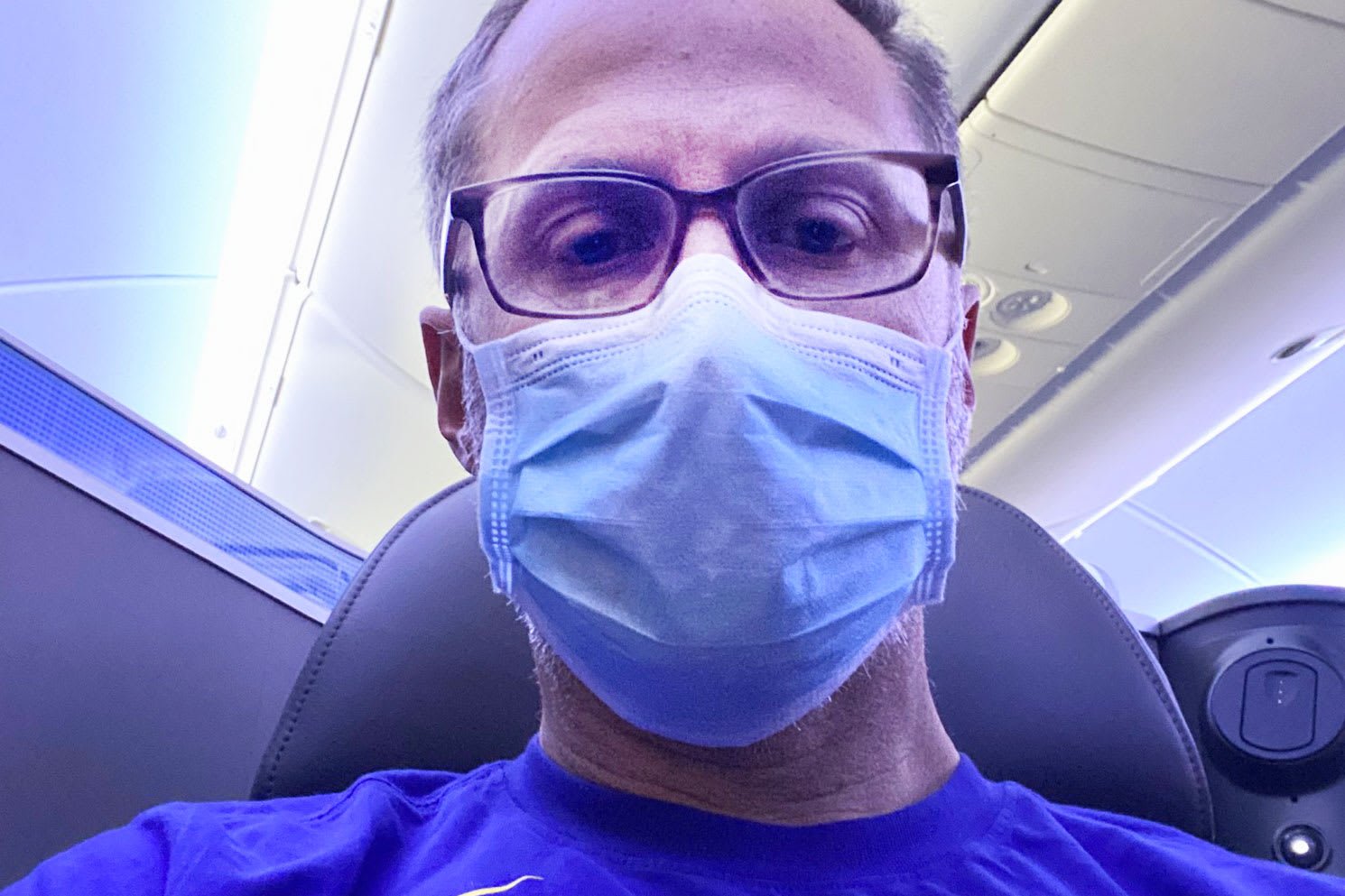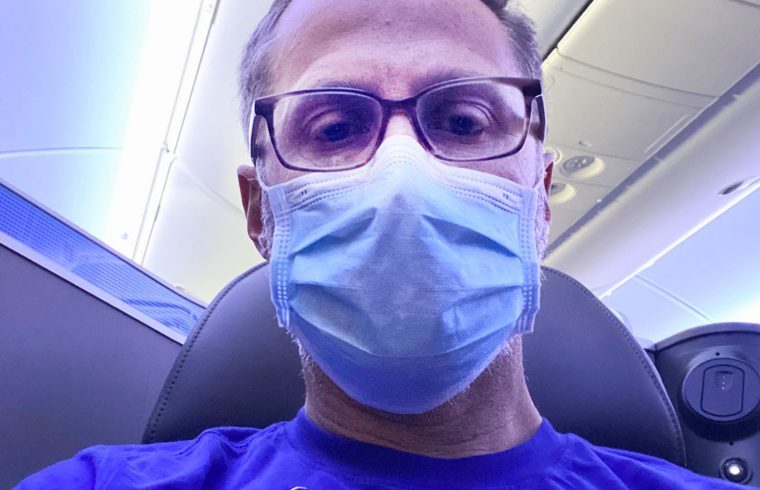
Dr. Ethan Weiss making his way to New York in late April to treat Covid-19 patients.
Source: Dr. Ethan Weiss
When Dr. Ethan Weiss arrived in New York in late April, he started his first shift almost immediately.
Weiss is a cardiologist based in San Francisco, which has had relatively few hospitalizations related to Covid-19. He decided to help out with New York’s massive Covid-19 outbreak because he felt helpless sitting at home.
Weiss was just one of the doctors and nurses from University of California San Francisco’s hospital system who risked their lives by flying out to Manhattan. New York City has now reported more than 20,000 deaths. Another group headed to the Navajo Nation, another hotspot, which has reported more than 6,000 cases of coronavirus.
In total, about 40 doctors and nurses from UCSF across a variety of specialties flew out to Covid-19 hotspots, according to the chairman of medicine, Dr. Bob Wachter.
It’s now been about a month since Weiss got back to San Francisco. He’s glad that he went, but calls it one of the most challenging experiences of his life. And he’s vexed that so many people still aren’t taking the public health guidelines seriously.
“I’m in a dark place right now,” he told me by phone in late May. “Everyone is impatient. A lot of people are feeling done with this pandemic. They don’t understand this is how it is going to be for a while.”
Covid-19 is still a major part of the national conversation, but researchers have found growing evidence of a “pandemic fatigue.” Many people are itching for life to resume as normal after months of sheltering in place. Moreover, many states are re-opening shuttered businesses, and President Trump has stated that he’s planning to hold rallies, all which is sending a signal that the pandemic is under control.
But as of June, Covid-19 is still spreading in the United States. Arizona, Texas and Utah, among other states, are reporting an increase in diagnosed cases and hospitalizations. Epidemiologists and public health experts remain worried.
Now, these doctors are urging anybody who will listen to take the pandemic seriously and keep observing precautions.
“There’s no way to describe how awful this disease is until you see it,” said Dr. Michelle Yu, a pulmonary and critical care doctor from UCSF, who worked at a hospital in the outer boroughs of New York City. “The nurses kept showing up every day, and they will keep showing up, but you could see the fatigue on their faces.”
“It was just horrible,” added Weiss.
Dr. Michelle Yu, in red in the front row, at the New York Presbyterian Hospital in New York on one of her last days treating Covid-19 patients.
Source: Dr. Michelle Yu
Otherwise healthy patients in their forties and fifties
The San Francisco team noticed that the New York providers, who had been dealing with the situation for weeks, were seriously burnt out by the time they arrived. Some weren’t trained to care for patients with severe viral illnesses, but were asked to step in nonetheless.
Dr. Maya Kotas, a pulmonary and critical care doctor from UCSF, found herself working with nurses and physician assistants who were trained in specialties like neurology or neurosurgery. Many of these providers were learning on the fly. Dr. Yu said she gave lectures to the residents and nurses as frequently as she could.
One of the most challenging aspects was the lack of clear clinical guidelines for treatments. Scientists still don’t know a lot about the disease.
“I’ve worked in a lot of settings,” said Dr. Michael Peters, a pulmonary critical care doctor, was assigned to a hospital in Queens overwhelmed with Covid-19 cases. “These patients were very sick, and they had a disease that we didn’t know how to take care of yet.”
All of the UCSF doctors said they saw patients in their forties and fifties, who didn’t meet the “typical” profile for Covid-19 because they were otherwise healthy. In the Queens hospital, where Peters worked, many of the patients were Black or Hispanic. Data shows that the virus has hit racial and ethnic minorities worse, and studies are underway to better understand why.
Kotas said she was thrown outside of her comfort zone almost immediately once she arrived to New York. She was stationed at New York Presbyterian/Weill Cornell Medical Center alongside several colleagues, including Yu.
“We are used to dedicated ICUs (intensive care units) with space and equipment,” said Kotas. “And sliding glass doors to get patients in and out.” But she and her team were constantly facing a shortage of necessary medications, supplies and personnel in their converted ICU, and the patients were extremely isolated to preserve resources.
“They were alone in their sickness…they didn’t have families see them, and our contact was limited to preserve personal protective equipment,” she explained. “Sometimes we would call to say that a patient had died, and they hadn’t even seen them in three weeks.”
Dr. Maya Kotas volunteering at the New York Presbyterian Hospital during the height of the Covid-19 pandemic.
Source: Beth Higgins
Weiss said sometimes he would just sit in patients’ rooms for a while just to keep them company, even though they weren’t responsive. Dr. Yu recalled having to Facetime family members to provide updates via the one functional iPad that was being passed around across three ICUs (that’s one iPad for every 36 critically ill patients). He sometimes had to inform them that the patient had died.
Many of the Covid-19 patients who were on ventilator but survived seemed very frail to the doctors. “People were so weak that they came off a ventilator and three weeks later, they still couldn’t wiggle their toes,” said Kotas.
All of the doctors were aware of the risks to their own health, but took their chances. Yu insisted on doing procedures on her own, such as removing breathing tubes from patients, to reduce the risk that anyone else would be exposed to the virus if it aerosolized.
Fortunately, she and the other doctors tested negative after they returned to California and were able to resume treating patients at home.
‘I hope we have the stamina’
One of the most devastating aspects of the virus is that it’s known to sweep through families.
Kotas recalls working with a nurse whose own parents were in the ICU a few floors up at Cornell, and one of them died.
Weiss immediately observed that many of his patients were related. He doesn’t typically see that in cardiology, where it’s extremely uncommon to see two members of the same family dying of heart disease at the same time.
None of the doctors are public health experts, so they didn’t feel qualified to advise people about how to stay healthy and safe. But on their return to San Francisco, they all implored their network of friends and family-members to take Covid-19 seriously and listen to the advice of public health officials. They know what happens when health systems get overwhelmed.
“I hope we have the stamina and spirit and sense of collectivism (to avoid outbreaks like New York),” said Dr. Weiss. “If there’s one thing I’d recommend, it’s to keep wearing masks.”
“I know everyone is getting tired,” added Kotas, who said she’s willing to fly out again to the next potential hotspot if she’s needed. “But please take it seriously. People really suffer when we don’t take care of each other and contagion gets out of control.”
Correction: The Navajo Nation has reported more than 6,000 coronavirus infections and about 300 deaths. A previous of this story misstated the number of fatalities.







